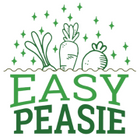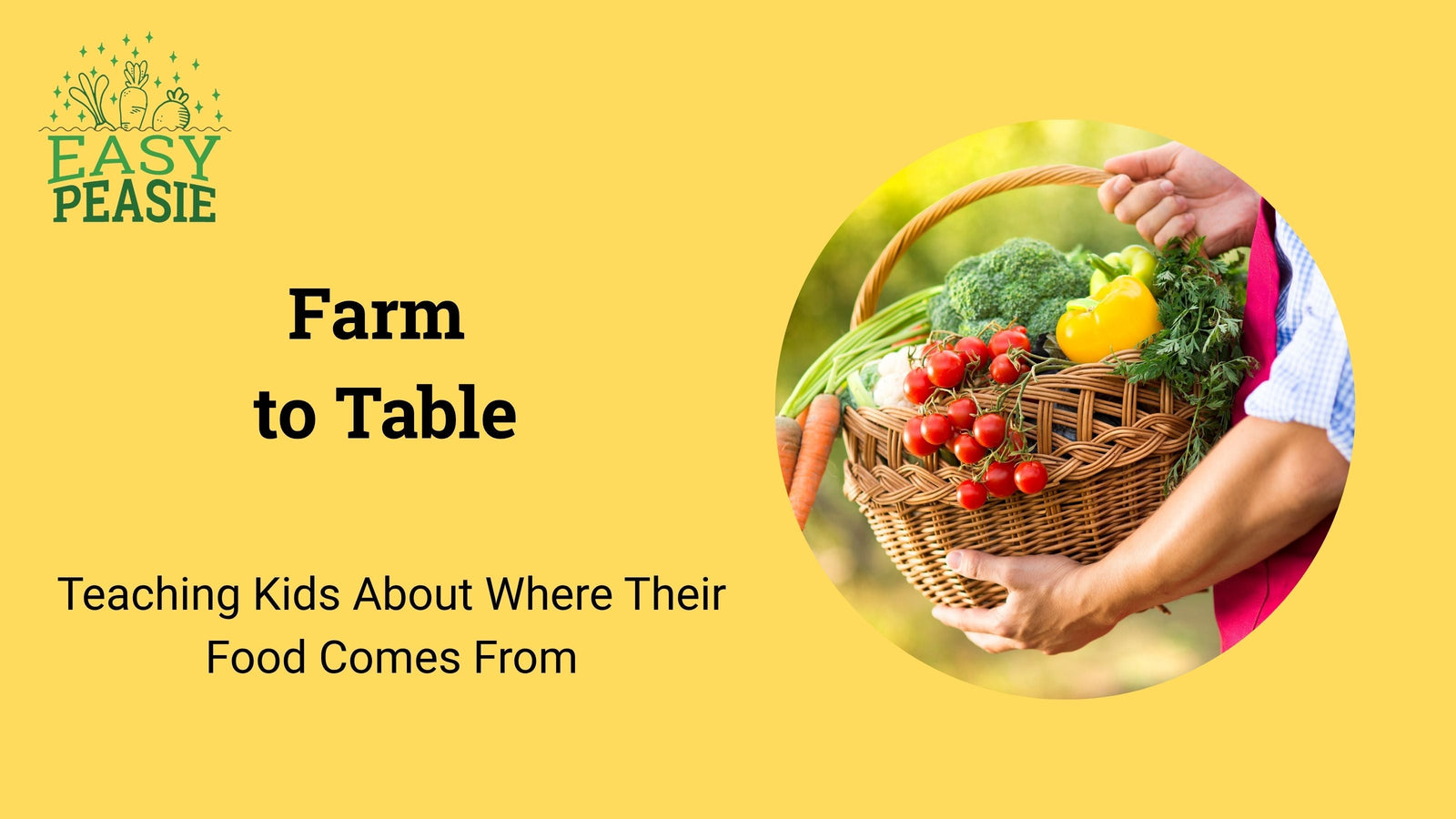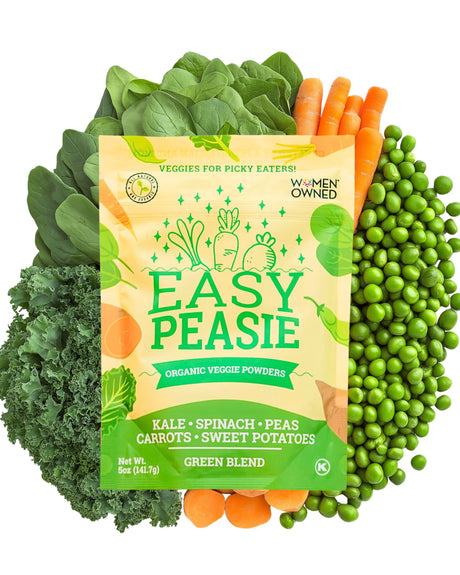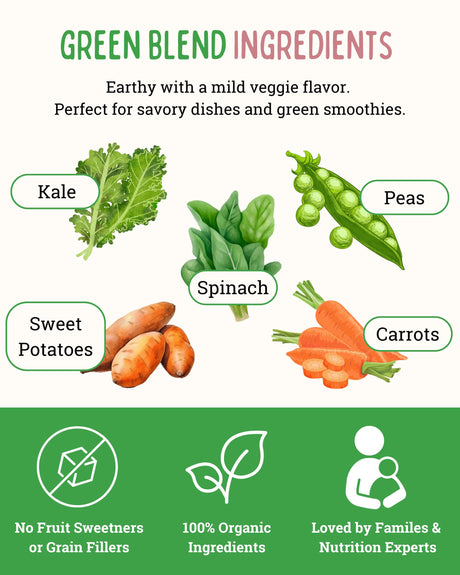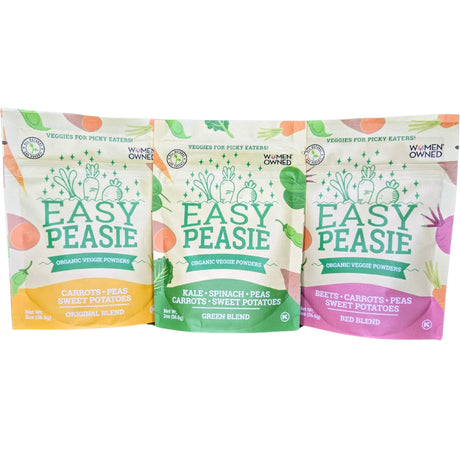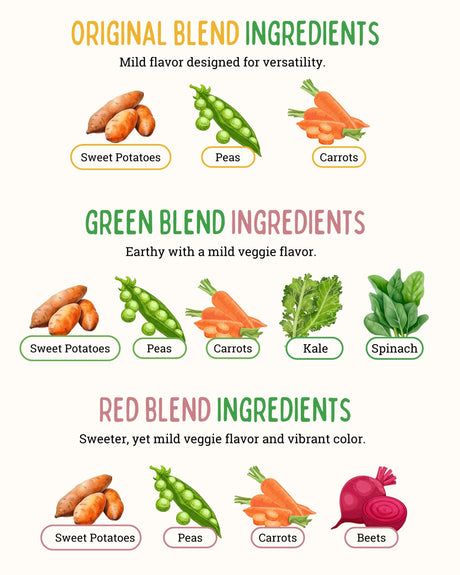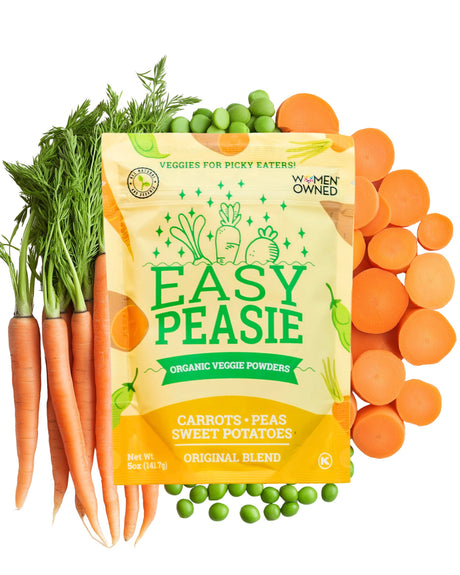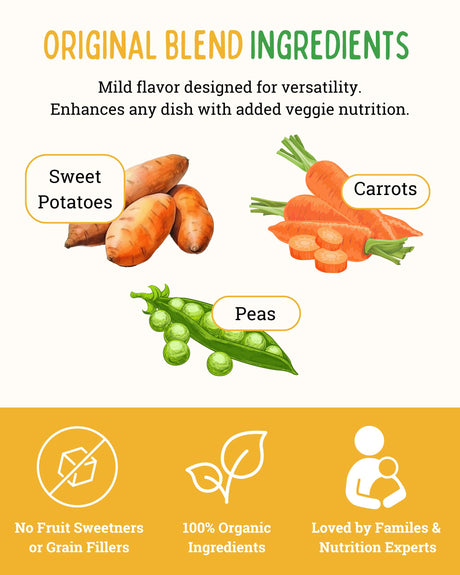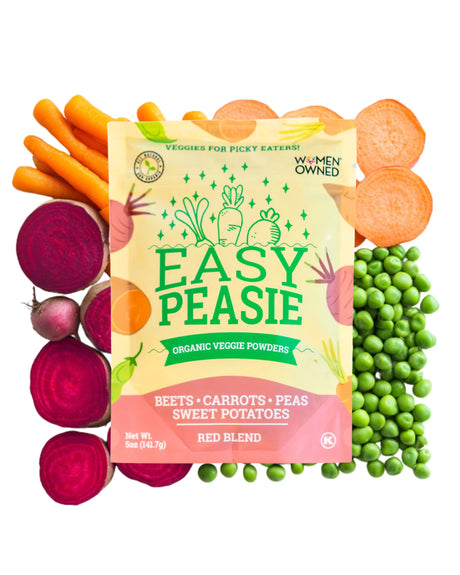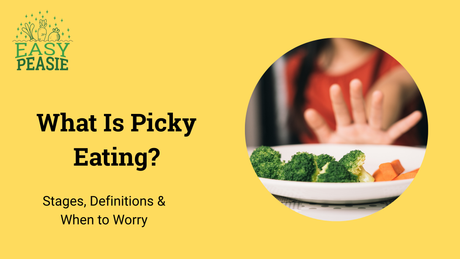Understanding Food Origins
In today's world, where grocery store shelves are filled with neatly packaged foods, it's easy for children to miss out on the connection between what they eat and where it comes from. Understanding food origins isn't just about knowing that carrots grow in the ground or that milk comes from cows. It's about fostering a deeper appreciation for the journey food takes from farm to table and recognizing the hard work that goes into each bite.
When kids learn where their food comes from, they start to make more mindful food choices, leading to healthier eating habits. They begin to see the value in fresh, whole foods and are more likely to try new fruits and vegetables.
Moreover, understanding food origins nurtures a respect for the environment, as children learn how sustainable farming practices can protect our planet for future generations.
In this blog, we'll explore engaging ways to teach children about the origins of their food.
From fun educational activities to hands-on experiences like farm visits and home gardening, we'll cover a range of strategies to help kids connect with their food in meaningful ways.
Along the way, we'll also provide resources, book recommendations, and tips to make learning about food sources an exciting adventure for the whole family. By the end, you'll be equipped with practical ideas to cultivate a farm-to-table mindset in your home, ensuring your kids grow up with a healthy, informed relationship with the food they eat.
Why Kids Should Learn About Food Production
Building a Connection to Food
When kids understand where their food comes from, it’s like opening a door to a whole new world of appreciation. Knowing that carrots grow underground, that milk comes from cows, and that bread starts as wheat in a field helps children see food as more than just something on their plates. This connection can make them more curious about what they eat, turning mealtimes into moments of discovery and even encouraging them to try new foods.
Plus, when kids see the effort that goes into producing food, they’re more likely to value it, which can lead to healthier eating habits.
Environmental Awareness
Teaching kids about food production is a great way to introduce them to the concept of environmental stewardship. When children learn about farming practices, the impact of food transportation, and the importance of sustainable choices, they start to see how their food choices affect the planet. This awareness can inspire them to be more mindful of waste, to appreciate local produce, and to understand why reducing their carbon footprint is important.
By connecting food production with environmental care, we’re helping raise a generation that’s not just health-conscious but also eco-conscious.
Encouraging Healthy Eating
Knowledge is a powerful tool in shaping eating habits. When kids know the story behind their food—how vegetables grow from seeds, how fruits are harvested, or how animals are raised—they’re more likely to make healthier choices. Understanding food origins can demystify vegetables and make them more appealing, turning them from something “yucky” to something cool and interesting. This link between knowledge and diet helps kids see the value in choosing whole foods over processed ones, setting the stage for a lifetime of healthy eating.
Educational Activities About Food Origins
Interactive Food Education for Kids
Learning about food origins doesn’t have to be a dry subject—make it fun! Engage kids with interactive activities like food sourcing games, where they match foods to their sources, or farm-to-table role-playing, where they pretend to be farmers, chefs, and customers.
Virtual farm tours can also be a hit, letting kids see real-life farming operations up close without leaving home. These activities not only educate but also entertain, making the learning process enjoyable and memorable.
Home Gardening Projects for Kids
There’s no better way to teach kids about food production than by letting them grow something themselves. Start with simple gardening projects like planting herbs on the windowsill or growing a tomato plant in a pot. If space allows, a small vegetable garden in the backyard can be a wonderful way to show kids the full cycle of food production, from planting seeds to harvesting crops. This hands-on experience teaches responsibility, patience, and the joy of eating something you’ve grown yourself.
Understanding Food Labels
Food labels are more than just a list of ingredients—they’re a roadmap to understanding where your food comes from. Teach your kids how to read labels, focusing on the origin of ingredients and what terms like "organic" or "locally sourced" really mean.
This skill empowers kids to make informed choices and to understand the impact of those choices on their health and the environment. It’s a simple yet powerful way to give kids control over their eating habits and to foster a deeper connection to their food.
Farm Visits and Real-Life Experiences
Farm Visits for Children
Visiting a local farm can be a magical experience for children, offering them a firsthand look at where their food comes from. Seeing crops growing in the fields, meeting the farmers who tend them, and even interacting with farm animals provide a tangible connection to the food they eat. These experiences can make abstract concepts like “farm to table” come alive, fostering a deeper appreciation for the hard work involved in food production. Plus, it’s a fun and educational outing that the whole family can enjoy.
Community Supported Agriculture (CSA) Programs
Joining a Community Supported Agriculture (CSA) program is a wonderful way to teach kids about seasonal eating and the importance of supporting local food systems.
By receiving a weekly or bi-weekly box of fresh, locally-grown produce, kids can learn about the different fruits and vegetables that are in season, try new foods, and understand the benefits of eating locally. Participating in a CSA also connects families with the farmers who grow their food, offering opportunities to visit the farm and see the growing process up close.
Farmers' Markets
Farmers' markets are a treasure trove of learning opportunities for kids. Strolling through the stalls, children can meet local growers, learn about the variety of foods produced in their area, and ask questions about how different products are made. It’s a fantastic way to expose kids to the diversity of food production and to encourage them to try new, fresh, and seasonal foods. Plus, by allowing kids to help choose fruits and vegetables at the market, they’re more likely to be excited about eating them.
Growing Vegetables with Children
Starting a Home Garden
Starting a home vegetable garden is one of the best ways to teach kids about where their food comes from. Choose easy-to-grow, kid-friendly plants like cherry tomatoes, radishes, or herbs, and involve your children in every step of the process—from planting seeds to watering, weeding, and eventually harvesting.
Gardening together not only provides valuable life skills but also a sense of accomplishment and pride when the family gets to enjoy the fruits (and veggies) of their labor.
Educational Benefits of Gardening
Gardening is a hands-on educational experience that teaches kids important life lessons. As they tend to their plants, children learn about responsibility by taking care of their garden daily. They discover the value of patience as they wait for their plants to grow, and they gain a basic understanding of science by observing the life cycle of plants. Gardening also provides a natural context for discussions about nutrition, the environment, and the importance of healthy eating.
From Seed to Plate
There’s something incredibly satisfying about eating a meal made from ingredients you’ve grown yourself. By guiding kids through the process of growing, harvesting, and cooking their own vegetables, they can experience the full cycle of food production.
This journey from seed to plate can make meals more meaningful, encouraging children to appreciate their food and to enjoy eating vegetables they might have otherwise resisted. It’s a delicious way to teach kids about the importance of fresh, homegrown produce.
Fun Facts and Books About Food for Kids
Fun Facts About Food
Did you know that carrots were originally purple? Or that honey never spoils? Sharing fun and surprising facts like these can spark a child’s curiosity about food and where it comes from. Learning that broccoli is actually a flower or that peanuts aren’t really nuts but legumes can make vegetables and other foods seem much more interesting, turning mealtime into an opportunity for discovery.
Kids' Books About Food Sources
Books are a wonderful way to introduce children to the world of food production and healthy eating. Stories like "The Very Hungry Caterpillar" by Eric Carle or "Eating the Alphabet" by Lois Ehlert make learning about fruits, vegetables, and food sources both fun and educational.
For older kids, titles like "How Did That Get in My Lunchbox?: The Story of Food" by Chris Butterworth provide a more detailed look at the journey food takes from farm to table. These books not only educate but also inspire kids to think more deeply about what’s on their plate.
Multimedia Resources
In addition to books, multimedia resources can enhance your child’s understanding of food origins. Documentaries like "The Biggest Little Farm" or "Fresh" offer engaging visuals and stories about farming and sustainability that can captivate young minds.
Apps like "Grow Garden" allow children to simulate farming and gardening activities, making learning interactive and hands-on. These resources make complex concepts like sustainability and food production more accessible and enjoyable for kids.
Teaching Kids About the Food Supply Chain
Food Supply Chain Explained for Kids
The journey of food from farm to table can be a fascinating story for children. Start by explaining that the food on their plate often begins as a seed planted in the ground.
Farmers then care for these plants, or raise animals, which are harvested and transported to markets or stores before finally arriving in the kitchen. Breaking down the food supply chain into simple steps helps kids understand the many hands involved in bringing food to their table and emphasizes the importance of each role in this process.
Interactive Activities
Hands-on activities can make learning about the food supply chain more engaging.
Try creating a food origin collage with your child, where they cut out pictures of different foods and arrange them in order from farm to table. Another idea is to map out where different foods in your kitchen come from, using a world map to show the journey they’ve taken. These activities not only reinforce the concept but also help kids visualize the global nature of food production.
Discussion Topics
Conversations about sustainability and food waste can be tied back to the food supply chain in meaningful ways. Discuss with your child how choosing local foods can reduce the environmental impact of transportation or how composting kitchen scraps can help reduce waste and return nutrients to the soil.
These discussions encourage children to think critically about their food choices and understand the broader impact of the food supply chain on the environment.
Incorporating Farm-to-Table Lessons into Daily Life
Cooking Together
One of the best ways to bring farm-to-table lessons to life is by involving kids in the kitchen. Encourage them to help with meal planning, picking recipes that include ingredients from your garden or local farms. Let them wash vegetables, measure ingredients, and stir sauces, turning meal prep into a fun and educational activity. This hands-on experience not only teaches them about food sources but also fosters a love for healthy eating as they take pride in dishes they helped create.
Healthy Eating and Food Sources
Understanding where food comes from can deeply influence daily food choices. When kids learn that the carrots in their salad were grown in their backyard or that the eggs in their breakfast were laid by local chickens, they develop a stronger connection to their meals.
Use this knowledge to guide their choices at the grocery store or farmers' market, emphasizing whole, unprocessed foods. This habit of making informed choices based on food origins can promote lifelong healthy eating.
School and Community Programs
Beyond the home, there are many opportunities for kids to learn about farm-to-table principles. Look for school programs that include gardening projects, cooking classes, or field trips to local farms. Community initiatives like farmers' markets or community-supported agriculture (CSA) programs often have educational components, such as farm tours or food preparation workshops. These programs offer valuable experiences that reinforce the importance of understanding food sources and sustainability.
Summary
Teaching kids where their food comes from is more than just an educational activity; it’s a powerful way to instill healthy eating habits and environmental awareness. By connecting children to the origins of their food, we help them appreciate the effort that goes into producing it and encourage them to make better choices for their health and the planet.
Incorporating farm-to-table lessons into your family's routine doesn’t have to be overwhelming. Start small, whether it’s growing a few herbs on your windowsill or visiting a local farm.
These simple steps can make a big difference in how your child understands and values the food they eat.
We’d love to hear how you’re teaching your kids about food origins! Share your experiences in the comments, follow Easy Peasie on social media (YouTube, Facebook, and Instagram) for more tips, and explore additional resources on farm-to-table education for children. Let’s work together to raise a generation that appreciates and respects the food that nourishes them.
